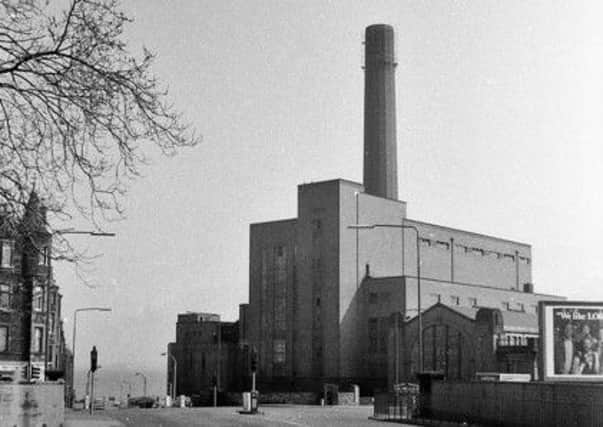Lost Edinburgh: Portobello Power Station
This article contains affiliate links. We may earn a small commission on items purchased through this article, but that does not affect our editorial judgement.


The imposing red-brick Portobello Power Station was situated along a considerable stretch of Portobello High Street between King’s Road and Rosebank Lane (now Westbank Street). It was built by the Edinburgh Corporation in 1923 to cope with the increasing demand for electricity at a time when the city’s population was rapidly increasing. King George V was present at the prestigious opening ceremony. The new power station was one of the most efficient in Britain and produced enough energy to light the streets, run the trams and meet the domestic energy requirements for all of Edinburgh. Fuel was transported from the collieries to the power station by a direct rail link and conveyer belt that ran underneath Portobello High Street. In 1938 the original power station was drastically altered to a design by architect Ebenezer James MacRae when its six individual stacks were replaced with a single 365-ft tall chimney. The power station’s impressive new lum towered high over the district and cut a dominant presence along the coastline. Its instantly recognisable shape was visible for miles around and acted as a notable marker for those approaching Edinburgh’s most popular beach – especially if you happened to be travelling on the top deck of a bus heading north along Portobello Road. On Rosebank Lane, the shiny Art Deco design of the newly-built Portobello Bathing Pool provided a stark contrast to the formidable red-brick and reinforced concrete mass of the power station located only a stone’s throw away. The close proximity of this industrial monster was not grudged however. As well as supplying the energy to run its popular wave-making machine, waste water used to cool the power station’s generators was cleverly utilised to heat the bathing pool’s icy contents. This practice allegedly ceased in 1970, which explains why most people struggle to recall the swimming pool being anything other than sub-zero.
Portobello Power Station eventually became surplus to requirements in the 1970s. New larger coal-fired power stations such as Cockenzie and Longannet in Fife were now in operation and the ageing facility at Portobello was no longer required. Closure took place in 1977 with demolition following soon after. A number of tenement windows along the King’s Road were reported to have been shattered due to the impact from the blast that toppled its colossal chimney stack.
Advertisement
Hide AdAdvertisement
Hide AdNo remnants of Portobello Power Station can be found today, though street names such as Electra Place within the new housing development that has since been built on the site provide a subtle clue to what stood before.
• David McLean is the founder of Lost Edinburgh Facebook page, a site dedicated to documenting the capital’s ever-changing landscape